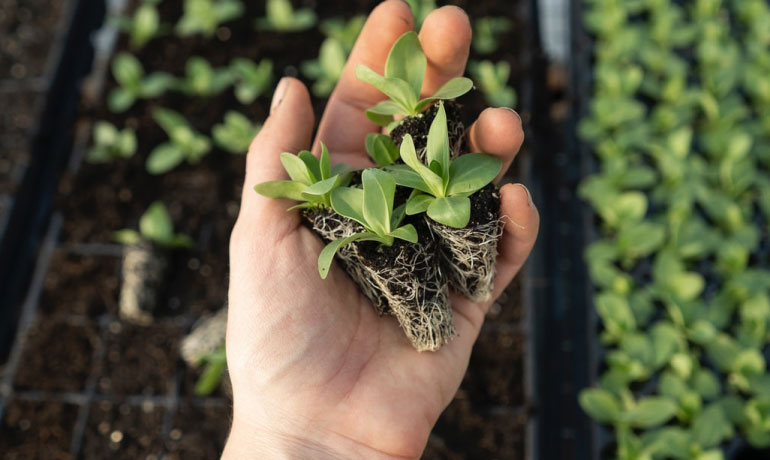
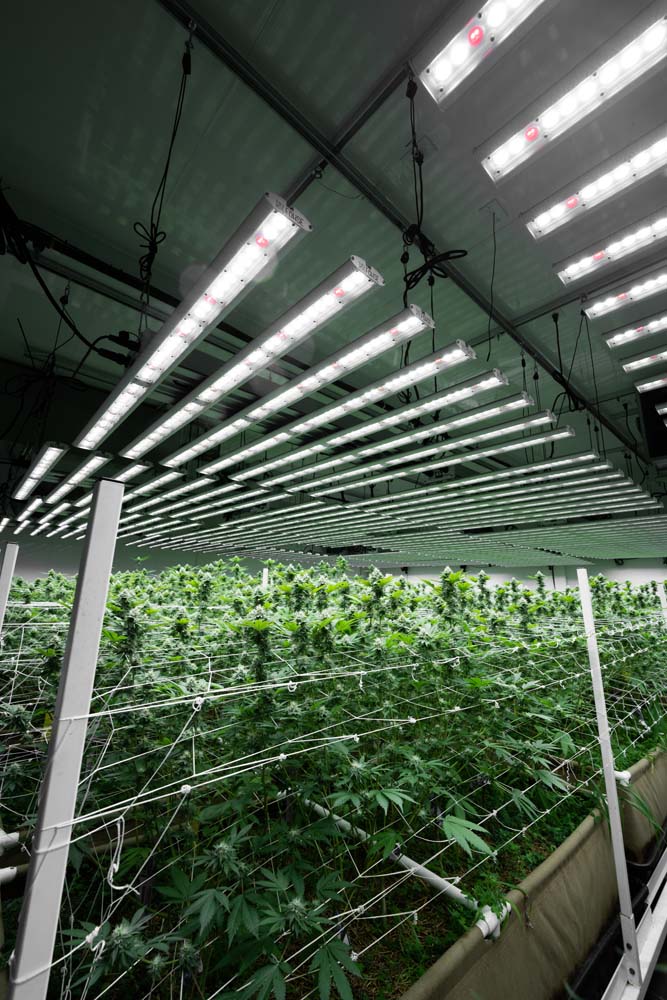
Properly managing your root zone is the culmination of a few different things:
- Type of Growing Substrate
- Irrigation Strategy
- Nutrition
- Water Quality
Let’s take a deeper look at the numerous things that should be considered in order to manage your root zone properly.
Types of Growing Substrate
Plants can be grown in various substrates or growing substances. In nature and some commercial systems, varying grades of soil are the primary growing substrate. In many controlled environments, soilless substrates are utilized for plant growth. Let’s look at some of the most commonly utilized growing substrates and some of their pros and cons.
Rockwool
Also known as stone wool or mineral wool, rockwool is a popular growing substrate used in commercial cultivation. It’s made from molten rock, usually, basalt or limestone, spun into fibers and formed into various products suitable for growing plants.
Rockwool is a sterile, inorganic material that has a neutral pH. It has excellent water-holding capacity while retaining great drainage properties. It can keep significant water within its fibrous structure, ensuring plants can access moisture for extended periods. The fibrous nature of rockwool creates air pockets within the substrate, promoting oxygen exchange for the root zone.
It’s important to note that while rockwool offers many advantages as a growing substrate, proper irrigation strategies and nutrient management are needed for successful plant growth. Automated irrigation systems are best paired with rockwool to avoid detrimental moisture content levels and optimize plant growth. Monitoring the moisture content, nutrient concentration, and pH of the substrate is crucial to maximizing the benefits of rockwool, which requires additional technology such as substrate sensors. Additionally, rockwool isn’t biodegradable and is primarily disposed of in landfills.
Soil
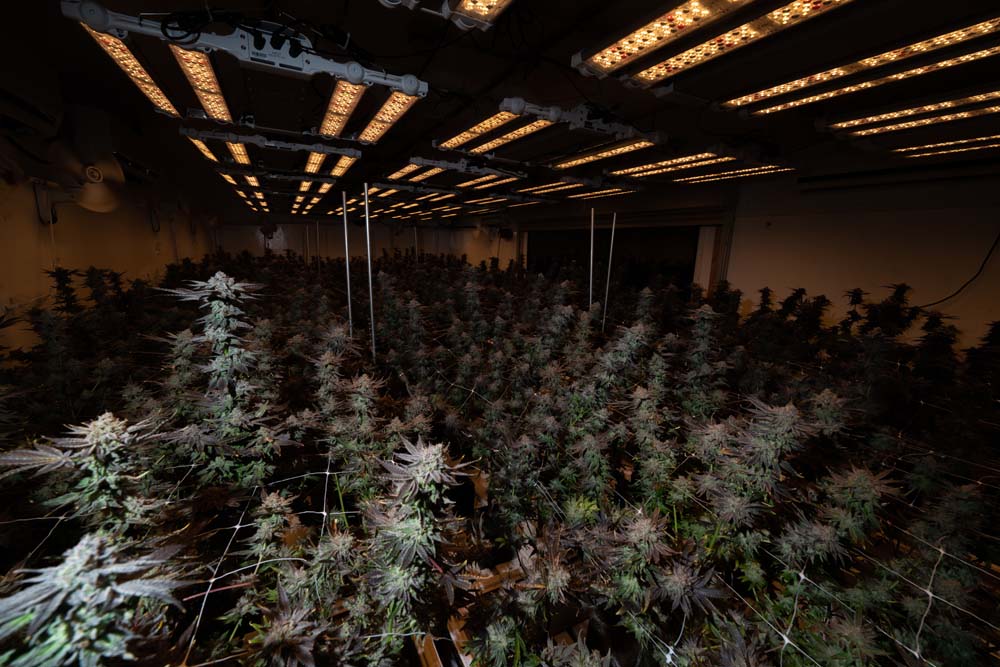
Soil is made up of many different substances and comes in varying compositions. Soil composition is incredibly
diverse and widely depends on geographic location, climate, biological activity and human intervention.
Each soil type or composition comes with its benefits and drawbacks. Here’s a breakdown of what can be found in soil.
Clay
Clay is a collection of fine particles with a high water-holding capacity. It retains nutrients well, typically having a high electrical conductivity. Plants that can tolerate moist conditions, such as certain fruit trees, shrubs, and perennials, grow well in clay-dominated soils.
While it can be beneficial in certain respects, it tends to be heavy, compacted, and drains poorly. Although it holds on to more nutrients, this can be detrimental for certain types of plants.
Sand
Sand is composed of larger particles than clay and has a coarse texture, mostly made of mineral and rock fragments. Sandy soil drains quickly and does not retain water or nutrients well. It also tends to be loose and not compact very easily. Succulents, herbs, and other plants that prefer well-draining soil will thrive in sandy soils.
Loam
Loam is a type of soil typically containing an even blend of sand and silt with a small percentage of clay (40%, 40%, 20%). It has a very balanced texture with medium-sized particles. It provides adequate drainage from sand, great water, and nutrient retention due to silt and clay. Loamy soil offers a quality environment to colonize microbiology. It’s important to note that the quality of loamy soil will vary depending on the ratio of sand and silt to clay.
Chalk
Chalky soil contains a high concentration of calcium carbonate, thus causing the soil to have a naturally high pH. Chalky soil drains well but needs to be alkaline, affecting nutrient availability. It also tends to lack organic matter. Lavender, sage, and other herbs can tolerate chalky soil conditions due to liking more alkaline soil.
Peat
Peat is derived from partially decomposed organic matter collected from wetland ecosystems. It has a high water-holding capacity and good nutrient retention. Its acidic pH makes it a suitable medium for blueberries, ferns, and rhododendron. Peat is one of the most common ingredients in potting media.
It’s important to note that soil composition can vary significantly depending on the location and local conditions. Soil amendments, such as compost and other amendments, improve soil structure, fertility, and pH levels. Conducting a soil test can provide valuable information about its composition and guide you in selecting the proper amendments. Substrate sensors are also effective tools for finding the media’s water content and nutrient concentration.
Coco Coir
Also known as coco peat or coconut fiber, coco coir is a widely used growing substrate in horticulture. It is derived from the fibrous material found between the outer husk and internal shell of coconuts. It is a natural, renewable, and sustainable resource. Coco can be processed in different forms, such as chips, blocks, or fine fibers.
Coco coir has an excellent water-holding capacity. It can absorb and retain moisture efficiently while providing enough drainage to prevent biotic pressures that can proliferate into root rot. Although coco coir initially has a low nutrient concentration, it has a high cation-exchange capacity, allowing it to hold on to nutrients effectively.
When using coco as a growing substrate, it’s important to hydrate and properly buffer it before use to remove any excess salts. Additionally, adjusting the pH according to the specific needs of the cultivated plants will help maximize the benefits of coco coir as a growing medium.
Aeroponics
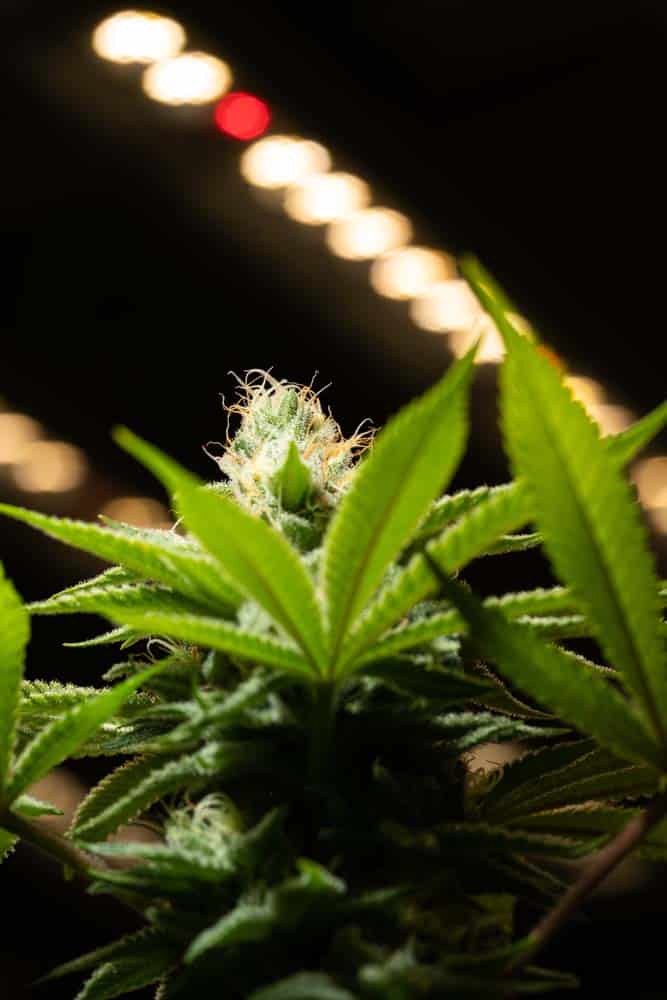
Aeroponics is a soilless growing technique that suspends plant roots in the air and mists them with a nutrient-rich solution. Unlike traditional growing substrates, such as soil or coco coir, aeroponics does not use a solid medium for support. This lack of air media and suspension also allows ample oxygen to the root zone.
These systems use significantly less water compared to traditional soil-based methods. By delivering the nutrient solution directly to the roots in mist form, root development is rapid. This is a commonly used strategy in controlled environments and research settings to optimize yield, plant growth and conserve resources.
Aquaponics
Aquaponics is a system of aquaculture in which the waste produced by farmed fish or other aquatic animals supplies nutrients for plants grown hydroponically, purifying the water. Choose a suitable substrate for the plants to grow roots and anchor in. Commonly used substrates in aquaponics include gravel, clay pellets, and expanded clay.
Adequate oxygen levels in the root zone are crucial for the plants and if you have beneficial bacteria in your system. Roots need oxygen for respiration, supporting the nitrogen-fixing bacteria that convert fish waste into plant-available nutrients. Proper aeration and good water circulation around the roots will help achieve this.
By focusing on these things, you can create an ideal environment for the plants by maximizing their symbiotic relationship with the fish. Regular monitoring, maintenance and adjustments are essential to ensure the system remains balanced and productive
Irrigation/Fertigation Strategy
The style of irrigation you select will greatly influence how your plants will uptake nutrients, the ability of your media to increase and decrease concentration, and plant morphology. Let’s dive deeper into the various styles of irrigation and where they might best be applied.
Hand-Watering
Hand-watering is one of the most basic methods of irrigating the root zone. It can be a beneficial tool to utilize as you notice pH and electrical conductivity imbalances in the plant when container gardening. A “flush,” or drench to a given amount of leachate, can be applied by hand to help bring balance to your substrate.
The infrastructure to water is typically cheap or free but comes with a number of drawbacks. This process is very labor intensive, making for a time-consuming and inefficient process as the size of your growing space increases.
Without carefully measuring the amount of solution, the nutrient concentration and overall fertigation volume can be extremely inconsistent. Using the senses can often be inaccurate compared to substrate sensors as you determine if your substrate needs irrigation. It’s ideal to convert to automated irrigation systems as your facility grows in size.
Drip Irrigation
For large growing spaces or those looking to increase their footprint, watering by hand quickly becomes inefficient and costly. It is advantageous for growers to install a drip irrigation system to reduce production costs. This level of irrigation gives growers further control over their crop yield and quality by dialing in the shot size for the given growth phase. The slow application rate of drip irrigation systems allows for precise delivery of the fertigation solution. Drip irrigation systems can increase production by dialing shot sizes and nutrient concentrations. Also, targeting the root zone limits weed production as surface moisture is limited.
The primary negative of drip irrigation systems is the up-front cost. It can be exponentially more expensive than hand watering. There’s also the risk of clogging your lines and emitters depending on the type of nutrients you use. Drip systems can also be complex to install, demanding the services of professionals to implement.
Overhead Irrigation
In some commercially cultivated crops grown outdoors today, overhead irrigation is utilized. This is typically applied via a sprinkler system. Overhead irrigation systems are typically low-cost to install compared to drip irrigation systems. Installation is simple, and this method offers a wide area of coverage. Unlike drip systems, there aren’t issues with clogging.
Some negative of this system is it’s inefficient use of water. Evaporation, wind drift, and water runoff are common, especially during hot and windy days. This method also thoroughly wets the foliage of your plants, which isn’t ideal for certain species such as cannabis and the cucurbit family. With that said, there’s a much higher risk of disease proliferation.
Plant Nutrition
Mobile Nutrients
Mobile Nutrients are essential plant elements readily translocated within the plant’s tissues. These nutrients are readily transported from older plant parts to actively growing tissue as needed. Here are the most important mobile nutrients for plants:
Nitrogen
Nitrogen (N) is an essential macronutrient for optimal plant growth. It plays a vital role in various plant processes and is a key component of proteins, nucleic acids (RNA and DNA), enzymes, and chlorophyll. One of the primary functions of Nitrogen is its role in protein synthesis. Proteins are crucial for plant structure as well as the regulation of metabolic processes.
Plant roots can take up two major forms of Nitrogen: ammonia (NH4+), nitrate (NO3-), amino acids, and urea. Plant roots can also take up nitrite (NO2-), but too much is toxic. Nitrates can suppress the uptake of phosphorus and sulfur. Too much ammonia can suppress the uptake of potassium, calcium, and magnesium.
Phosphorus
Managing Phosphorus (P) levels in growing media is crucial for achieving optimal plant health and performance. It is a critical component of adenosine triphosphate (ATP), the primary energy source for plants. Phosphorus is a constituent of many organic compounds, such as sugar phosphates, nucleic acids, and certain coenzymes.
It’s also needed for the reproductive cycle of plants. It’s involved in forming the development of flowers, fruit, and seed. Adequate phosphorus levels promote flower sets, increase the number of flowers produced, and enhance seed development. Although adequate phosphorus levels are needed for optimal plant growth, excessive use can harm plants by locking out other essential nutrients.
Potassium
Potassium is involved in numerous plant processes, including photosynthesis, protein synthesis, enzyme activation, and carbohydrate metabolism. It helps plants build strong cell walls, improving water and nutrient uptake by regulating stomatal openings. Adequate potassium will enhance plant vigor and resistance to various stresses like drought, disease, and pests. It’s also vital to maintaining the pH of cells, which is essential to proper nutrient uptake.
The availability of potassium is highly dependent on the type of growing media you use. Sandy soils will have lower potassium levels, while clay will retain more.
Magnesium
Magnesium is an essential plant nutrient and a central component of chlorophyll, making magnesium critical to the overall efficiency of photosynthesis. It’s also involved in energy transfer, converting light energy into chemicals. This makes magnesium crucial to producing carbs and other energy-rich compounds that fuel plant growth and development.
It plays a role in activating enzymes involved in various metabolic reactions, including those related to DNA and RNA synthesis. It also aids the transport of phosphorus within the plant and contributes to the stabilization of cell membranes.
Magnesium deficiency can result in chlorosis, where leaves turn yellow between their veins as well as reduced growth and poor fruit or flower development.
Sulfur
Sulfur is a fundamental component of amino acids, which are the building blocks of proteins. It is essential for the synthesis of vitamins, enzymes, and coenzymes that are vital to plant growth and metabolism.
Sulfur is particularly important for forming disulfide bonds, which help stabilize protein structures and contribute to cell wall strength. It plays a massive role in the synthesis of certain secondary metabolites that are involved in plant defense mechanisms.
Sulfur deficiency can lead to symptoms such as stunted growth, chlorosis of leaves (similar to N deficiency), and reduced seed and fruit production.
Immobile Nutrients
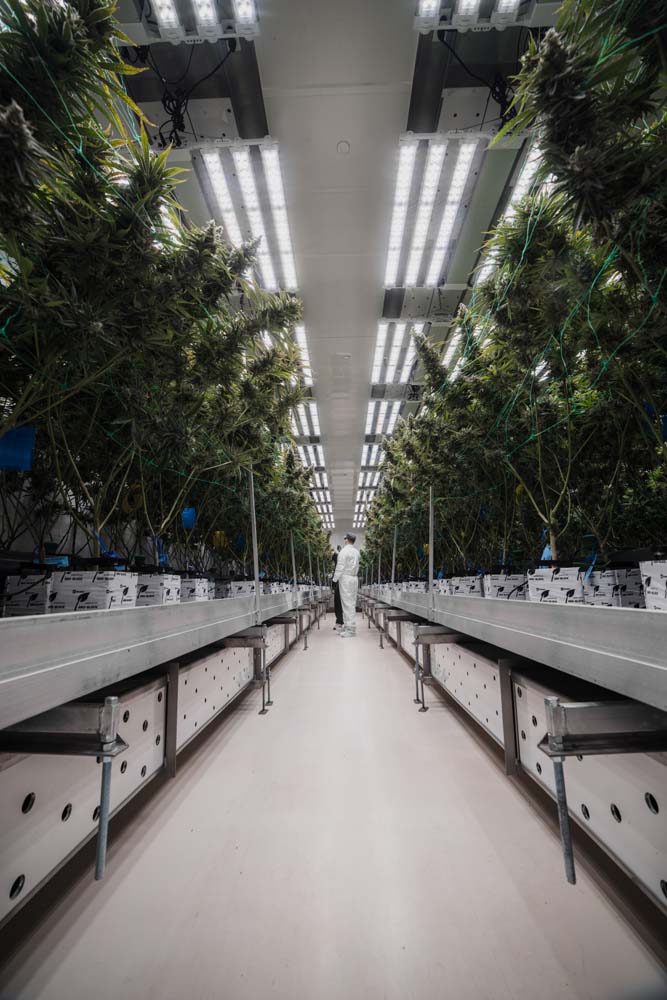
Immobile nutrients refer to essential nutrients that, once taken up by the root system, cannot be readily translocated or moved to other parts of the plant as growth continues. Here are a few examples of immobile nutrients:
Calcium
Calcium is a crucial component of plant cell walls, contributing to their structural integrity. Calcium also functions as a secondary messenger in cell signaling pathways, helping to regulate numerous physiological processes such as enzyme activation, hormone responses, and stress tolerance.
Additionally, calcium plays a role in the transport of other nutrients within the plant and the regulation of water movement. Adequate calcium levels are necessary for root development, proper cell division, and the prevention of blossom end rot.
Iron
Iron is a key micronutrient that plays a major role in chlorophyll synthesis. Iron is also a cofactor for enzymes involved in various metabolic processes, including those related to respiration and nitrogen fixation. It’s necessary for proper DNA synthesis and activating certain enzymes that combat oxidative stress.
While iron is required in small quantities, its availability and uptake can be challenging due to soil pH and oxygen. Iron deficiency can lead to chlorosis and reduced growth.
Zinc
Zinc is an essential micronutrient that plays a vital role in cell division and elongation. It also contributes to synthesizing certain proteins and enzymes that help plants adapt to stress conditions such as drought and disease.
Zinc deficiency can lead to a number of issues, including stunted growth, reduced leaf size, and impaired root development.
Manganese
Manganese is a cofactor to several enzymes involved in photosynthesis, respiration, and nitrogen metabolism. Manganese is particularly crucial to the breakdown of water molecules during photosynthesis, which generates oxygen and fuels the production of energy-rich molecules like ATP.
Manganese also contributes to the formation of chloroplasts and is involved in the metabolism of various nutrients, including nitrogen and carbohydrates. It also aids in the synthesis of fatty acids and certain vitamins
Manganese deficiency can lead to visible symptoms such as yellowing between leaf veins and reduced growth rates. Maintaining an appropriate level of manganese in the media is important to ensure optimal growth.
Copper
Copper is a cofactor of several enzymes involved in photosynthesis, respiration, and light synthesis. Copper’s primary function is in electron transport, aiding in the transfer of electrons within the cell’s mitochondria and chloroplasts, which are essential for energy production and overall plant metabolism.
Additionally, copper forms enzymes that help plants with oxidative stress, strengthening them against environmental stresses.
Molybdenum
One of the main functions of molybdenum is being a cofactor for enzymes involved in nitrogen metabolism, particularly the conversion of nitrate to ammonia during nitrogen assimilation. This process is crucial for the synthesis of amino acids and plant proteins.
Molybdenum also aids in the activation of other enzymes related to sulfur metabolism and the formation of plant hormones. While most plants generally require trace amounts of molybdenum, its presence is critical to overall plant health.
Boron
Boron is an immobile micronutrient involved in many physiological processes. It’s involved in the synthesis and stability of plant cell walls, contributing to cell division, elongation, and overall structural integrity. Boron also aids in transporting sugars while the plant supports proper membrane function.
Additionally, Boron is vital to the metabolism of certain carbohydrates and the proper function of some enzymes. Its role in flower formation and pollen production further highlights its importance during the reproductive cycle. While plants only need Boron in trace amounts, its absence can lead to plant growth abnormalities and reduced crop yields.
Water Quality
Alkalinity and Acidity
Alkalinity refers to a solution’s ability to neutralize acids. Its primarily determined by the number of carbonates, bicarbonates, and hydroxides. Alkaline water has a pH above 7.0, indicating more hydroxide ions (OH-).
Some plants have a higher tolerance for alkaline conditions. These are often called “alkaline-loving” or “calcifuge” plants, such as cacti, succulents, and other native desert species.
Acidity refers to a solution’s concentration of hydrogen ions (H+) and is measured on a pH scale. Acidic water has a pH below 7.0, indicating a high concentration of hydrogen ions.
EC and pH
Substrate pH
Most plants thrive in a slightly acidic to neutral pH range of 6.0 – 7.0. Excessively alkaline water (above 7.5) can cause nutrient deficiencies and limit their ability to absorb certain minerals such as iron, manganese, and zinc. For cannabis grown in hydroponic media, a pH range of 5.6 – 6.0 is acceptable. In a soil system where micronutrient availability and biological presences are better, the pH can be between 6.0 – 6.5.
Irrigation pH
Alkaline irrigation water can gradually increase the pH of the growing media over time, making it less suitable for certain plants. Monitoring the media pH is crucial to adjust alkalinity levels accordingly through soil amendments or acidifying agents.
Acidic water can enhance the solubility and availability of certain nutrients like iron, manganese, and phosphorus. However, acidic irrigation can gradually decrease the substrate pH. Extremely low pH levels can cause nutrient toxicities and inhibit root development.
Microbial Contamination
Microbial contamination within irrigation systems can have a significant impact on controlled environment agriculture, which includes indoor hydroponic and greenhouse systems. Microbial contamination refers to the presence of harmful microorganisms like bacteria, fungi and algae in the water.
Sodium
When sodium is present in water or growing substrates, it can have varying effects on plants. However, it’s important to note that different plant species will have different tolerances to sodium concentrations.
Sodium Toxicity
Excessive sodium levels can be toxic to many plants, particularly those not adapted to alkaline or saline conditions. Sodium ions can disrupt the osmotic balance within plant cells, leading to cellular dehydration and impaired water uptake. This can result in eventual necrosis (cell death), stunted growth, reduced flower production, and sometimes death.
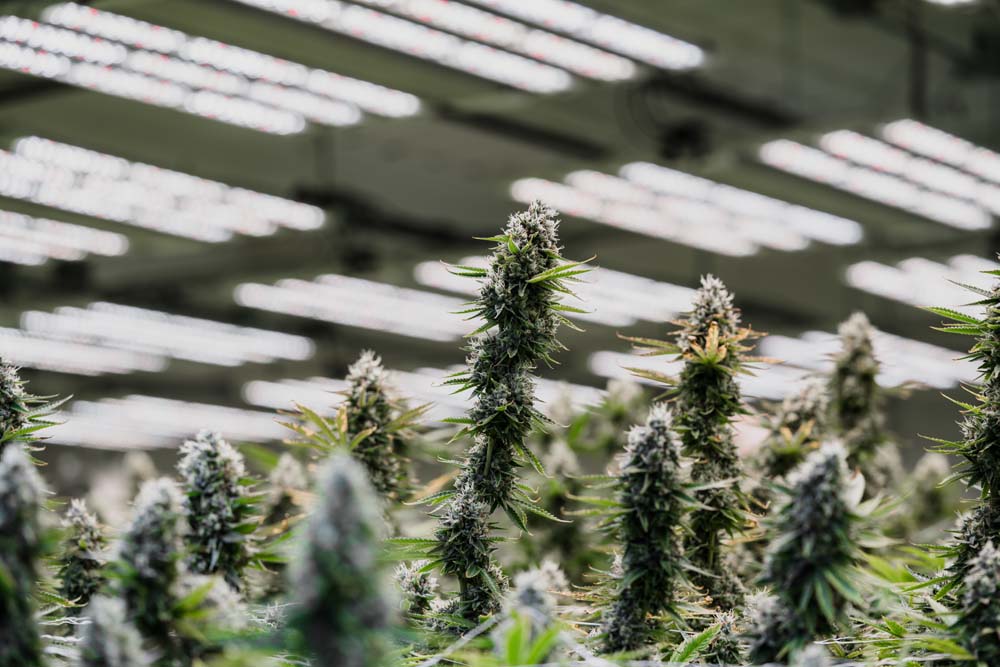
Conclusion
The proper management of the root zone in your cultivation endeavors involves a comprehensive approach that encompasses various factors. Selecting the appropriate growing substrate, implementing an effective irrigation strategy, ensuring optimal nutrition, and maintaining suitable water quality are all essential components of successful plant growth. As you navigate these intricacies, it’s important to consider innovative solutions that can streamline your efforts. This is where companies like Fohse, a leading LED grow light company, come into play. By harnessing advanced technology, such as Fohse’s cutting-edge LED grow lights, you can enhance photosynthesis, promote healthy root development, and maximize the benefits of your chosen growing substrate. These LED lights offer precise spectrum control, energy efficiency, and the ability to fine-tune lighting conditions to match the specific needs of your plants. Just as proper irrigation and nutrition are crucial, incorporating modern advancements like Fohse’s LED grow lights can elevate your cultivation practices and contribute to the overall success of your horticultural endeavors.



